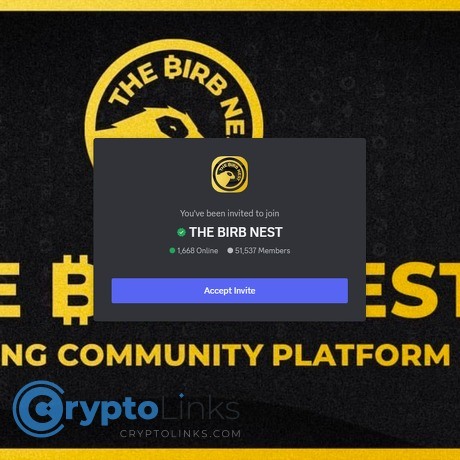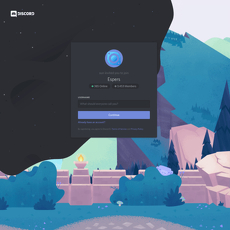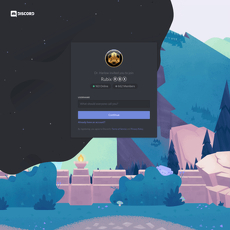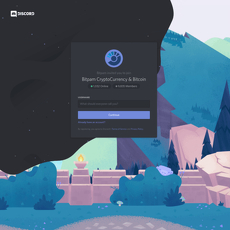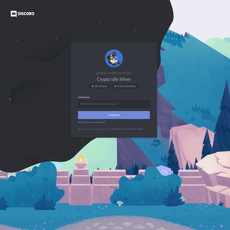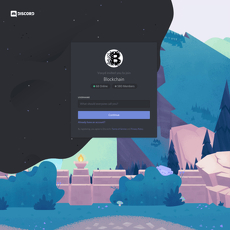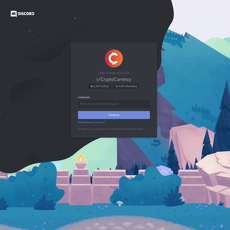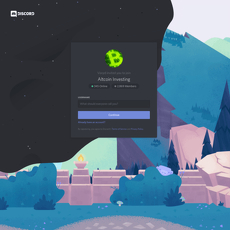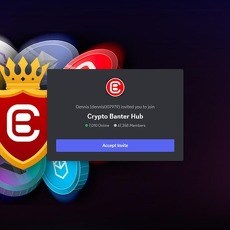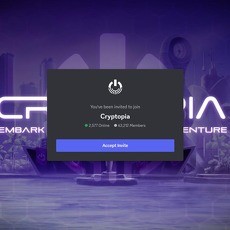THE BIRB NEST Review
THE BIRB NEST
discordapp.com
THE BIRB NEST Discord Review Guide: Everything You Need To Know + Honest FAQ
Thinking about joining the The Birb NestDiscord but not sure if it’s actually worth your time and money? Tired of hypey “premium” servers that ping you 200 times a day but vanish when trades go wrong?
I’ve reviewed crypto tools and communities for years on Cryptolinks, and this guide is built to help you decide fast, skip bad fits, and keep your wallet (and sanity) intact. If you want clear alerts, real education, and an active, moderated server—not just noise—you’re in the right place.
Join The Birb Nest on Discord if you want to look around while you read. I’ll show you exactly what to check once you’re inside.
Why most traders regret joining the wrong Discord
Let’s be honest: there are solid trading communities out there, and then there are paywalls wrapped in buzzwords. The common headaches I see over and over:
- Signal spam with no context — quick “long/short now” pings with no entry logic, risk, or invalidation.
- Confusing tiers — hard-to-decipher plans that hide the good stuff behind another upsell.
- No track record — cherry-picked screenshots, vague “+300%” claims, and zero ongoing trade updates.
- Overwhelm — too many channels, no clear routine, and FOMO from every new chart posted.
- Silent mods — questions sit unanswered; debates turn toxic; support is an afterthought.
Those problems are expensive. In behavioral finance, overtrading and FOMO are two of the biggest performance killers (see Barber & Odean’s work on individual investors). Discords that fuel that behavior usually drain accounts—not build skills.
Here’s how I’m going to help you decide quickly
I’m going to explain what The Birb Nest is, how their Discord at https://discord.gg/thebirbnest works, what each plan actually includes, and what the alerts and education look like day-to-day. I’ll cover how they track results and handle transparency—especially during losing streaks—because that’s where credibility shows.
I’ll also answer the common questions people ask and share simple steps to join safely without getting lost or over-notified on day one.
Quick note: great servers teach you how to think about risk, not just what to click. If a community can’t explain its process, the “signals” are just noise.
What you’ll learn in the next 5 minutes
- Whether The Birb Nest’s style fits how you trade (or want to learn to trade).
- What you actually get for your money and how pricing compares to similar communities.
- How to navigate key channels so you don’t miss important posts.
- What the community vibe is like—supportive or chaotic.
- The real pros and cons, not just marketing bullets.
- How their transparency and results tracking stack up to what I expect from a serious server.
- My bottom-line verdict so you can act with confidence.
If you’re hoping for a magic-money signal feed, this won’t be it. If you want structure, education, and accountability, you’ll like what’s coming. Ready to look under the hood and see what The Birb Nest actually is, who built it, and who it’s best for? Let’s tackle that next.
What is The Birb Nest? Origins, mission, and who it’s for
If you’re tired of loud “alpha” chats and want structured, risk-first trading with real teaching, this community will feel different. The Birb Nest centers on clear process: top‑down analysis, defined risk per idea, and routines you can actually follow day after day—no hero worship, no lottery-ticket hype.
“Don’t focus on making money; focus on protecting what you have.” — Paul Tudor Jones
The brand and background
The Birb Nest grew from chart threads and market commentary on X into a full trading education hub. You’ll see their footprint across X and streams on YouTube, with the founder known for methodical, no-drama analysis. That tone carries into the server: ideas come with invalidation, context, and reminders to size small.
There’s a deliberate focus on capital preservation and discipline. That’s not marketing spin—there’s a reason for it. Multiple studies show why guardrails matter:
- Barber, Lee, Liu, and Odean (Journal of Finance) found most day traders underperform over time; only a small minority remain profitable net of costs.
- Broker research like FXCM’s “Traits of Successful Traders” shows traders with defined stop-losses and better reward-to-risk ratios perform more consistently.
So the Nest pushes “risk first, outcomes second.” It’s not sexy. It’s sustainable.
Core offering in plain English
Here’s what you actually get when you’re inside, explained simply—no fluff:
- Market overviews: Regular BTC/ETH and majors rundown with key levels, trend context, and macro notes. Think: “Here’s the range, here’s what breaks it, here’s what invalidates it.”
- Trade setups with structure: Ideas come with entry zones, invalidation (where you’re wrong), targets, and risk unit guidance, so you can size and journal properly.
- Charts and annotations: Clean charts that show the “why” behind a setup—support/resistance, trendlines, momentum shifts—so you can learn the pattern, not just copy it.
- Live streams and sessions: Scheduled streams to walk through the week’s plan, answer questions, and review what worked or didn’t.
- Office hours and Q&A: Ask “naive” questions without getting piled on. Mods and mentors keep it constructive.
- Study rooms and templates: Journaling prompts, checklists, and routines that help you build habits. Reps > randomness.
A typical alert looks something like:
- “BTC swing idea: bias long above X, invalidation below Y. Initial risk: 1R. Targets: short list of levels. If invalidated, stop and reassess.”
This format forces clarity. You’ll know what to watch, when you’re wrong, and how to avoid turning a small loss into a spiral. For beginners, that’s huge. For intermediate traders, it’s a way to tighten execution and remove noise.
Who should (and shouldn’t) join
This community is best for people who want structure and honest feedback—not constant dopamine hits.
- Great fit if you:
- Want a repeatable routine: weekly game plan, daily check-ins, clean setups.
- Care about risk per trade, not just “what coin next?”
- Are willing to journal, ask questions, and learn from losses.
- Prefer calm, moderated chats over chaos and memes 24/7.
- Probably not for you if you:
- Only want free, high-frequency “signals” to copy blindly.
- Refuse to use stop-losses or position sizing.
- Expect guarantees, “insider calls,” or overnight riches.
- Live for ultra-low timeframe scalps and constant ping spam.
If you’ve been burned by signal rooms before, the shift here is simple: the Nest teaches you how to decide, not just what to click. That’s the habit that compounds. It also protects you from the biggest killers of accounts—oversizing, FOMO, and moving stops.
Curious what you actually unlock inside—channels, updates, alerts, streams—and how the plans compare for different budgets? I’ve broken that down next so you can choose the right tier without overpaying.
Plans, pricing, and what’s included
Good communities make it obvious what you get at each level. Here’s how The Birb Nest structures access so you can match cost to your goals and not overpay.
Plan tiers at a glance
Names and promos change over time, but the structure is consistent. Think four layers—from free foyer to full mentorship. I’ll keep this simple and practical:
- Free/Public Access
For browsing the vibe before you commit.- Server rules, announcements, and occasional open market notes
- Limited community chat to see moderation quality
- Links to public streams on X/YouTube
- Essentials (Starter)
Best for newer traders who want structure without overwhelm.- Member-only market updates (BTC/ETH + majors) with clear levels
- Selective trade ideas with chart context and risk notes
- Education posts: checklists, risk templates, and quick explainers
- Access to Q&A channels and basic study rooms
- Pro (Core)
For active learners who want full alerts and routine.- All Essentials + complete alert flow (entries, invalidation, targets)
- Daily/weekly market reports across multiple timeframes
- Live streams or office hours with recordings
- Priority support and member chat with tighter moderation
- Tools: watchlists, “levels to watch,” and session recaps
- Mentor/Elite
For traders who want accountability and direct guidance.- All Pro features + small-group sessions or mentor feedback
- Portfolio/risk reviews, journaling checkpoints
- Deeper education modules and structured learning paths
- Occasional 1:1 or hot-seat breakdowns (as available)
Typical price range: Essentials usually sits in the mid double-digits monthly, Pro in the high double to low triple digits, with Mentor/Elite above that. Annual plans often carry 20–30% discounts. Prices and bundles shift, so always confirm on the checkout page before you subscribe.
Example of what “Pro” feels like in practice:
- Morning high-level market map (key levels, bias, risk cues)
- Concrete alert: “BTC spot, invalidation at X, targets Y/Z; position sizing example for 0.5% risk”
- End-of-day debrief explaining what played out and why
- Weekly stream recording with next-week scenarios and FAQs
“Pay for clarity, not for certainty.” The wrong server sells promises. The right one sells process.
Trials, refunds, and cancellation
I value clear terms because nothing burns goodwill like a renewal surprise. Here’s how to approach it safely:
- Trials/promos: The Nest occasionally runs short trials or first-month discounts. If you see a trial banner at checkout, grab it—great way to test alert cadence and culture without full commitment.
- Refunds: As with most crypto communities, refunds are typically limited to billing errors or duplicate charges. Read the refund policy on the checkout page. If in doubt, ask support before you pay.
- Cancellation: Cancel from your account dashboard (Stripe/PayPal) to stop auto-renew. You usually keep access until the current billing period ends. Do this at least 24 hours before renewal to account for time zones and payment processor delays.
- Best practice: Start monthly. If it earns its keep for 1–2 months, switch to annual for the discount. Screenshot your plan details and next renewal date on day one.
Quick test plan to avoid “subscription creep”:
- Month 1: Paper trade only; track signals, your response time, and execution.
- Month 2: Trade small size with strict max daily risk; compare your P/L to sub cost.
- Month 3: Decide—upgrade, keep, or cancel—based on data, not vibes.
Value vs alternatives
Whether The Birb Nest makes financial sense depends on how you learn and what you trade. Here’s a simple way to judge value using real math, not hope.
Break-even math (example):
- Account: $5,000
- Risk per trade: 0.5% ($25)
- Average R multiple per well-executed alert: ~1R to 1.5R (varies by market conditions)
- Monthly Pro cost example: say $99–$149 (check current)
If you can execute 4–6 quality trades a month with an average 1R outcome, you’re roughly at break-even to modestly ahead after fees. If you take 1–2 trades a month, consider Essentials instead—the lower cost aligns better with your activity. This isn’t a promise of returns; it’s a sanity check to match plan to your pace.
Compared to common alternatives:
- Signals-only groups (cheap): Lower cost, but usually no education, poor risk guidance, and weak transparency. You’ll save money monthly but often pay in confusion and churn.
- One-off courses: Good for foundations. You pay once, but there’s no ongoing market context or accountability. Many traders plateau without feedback loops.
- High-end coaching: Best for rapid skill-building, but pricey. The Nest’s Mentor/Elite tier gives a lighter version at a fraction of 1:1 coaching costs.
- YouTube/Twitter-only: Free, but noisy. Great for inspiration, risky for execution without structure.
Behavioral finance research repeatedly shows that routines and checklists reduce impulsive trades and FOMO. That’s where paid communities can earn their keep: fewer random clicks, more planned decisions. If the server helps you avoid just one oversized mistake per month, the “invisible” value often exceeds the subscription itself.
Who gets the most value per dollar?
- Traders who journal, set alerts, and treat the plan as a system—not a hotline
- People who can attend (or replay) weekly sessions and apply one improvement at a time
- Anyone who wants alerts explained in plain English with risk and invalidation front and center
Thinking about testing a plan? In the next section, I’ll show you exactly how to join via https://discord.gg/thebirbnest, unlock the right roles, and set notifications so you catch the key alerts without torching your phone. Want the 10-minute setup that saves hours later?
Joining and using the Discord: from invite to daily routine
Onboarding
Getting in is straightforward, but there are a few steps that will save you time and frustration.
- Click the invite and accept. If you’re new to Discord, create an account first and verify your email.
- Pass server verification: most crypto servers use a rules screen + captcha bot. Read the rules, click Agree, and complete any bot check.
- Pick your roles/interests: you’ll usually see a “Start Here” or “Get Roles” channel. Tap the reactions or dropdowns to tag interests (e.g., BTC, ETH, Futures, Education). This unlocks relevant channels and filters pings.
- Unlock paid access (if you subscribed): after you purchase a plan on their site, a bot typically DMs you to link your Discord. If you don’t see the DM:
- Check your Privacy Settings and allow server messages temporarily.
- Confirm your Discord account email matches the one you used at checkout (or follow their “Link Account” instructions).
- If channels don’t unlock within a few minutes, post in #support with your order email and Discord handle or open a ticket.
- Harden your security: go to User Settings → Privacy & Safety → toggle off “Allow DMs from server members.” Scammers love pretending to be staff. No legit team member will ask for your seed phrase or exchange codes. Ever.
“Clarity beats speed. The goal is to catch the right trade, not every ping.”
Navigating channels like a pro
Most well-run trading servers have a familiar structure. Names vary, but the flow is similar. Here’s how I move through it without getting lost.
- Start Here / Rules / How-To — Quick house rules, role setup, and server map. Screenshot these for reference.
- Announcements — Big updates: new reports, stream times, policy changes. Turn on notifications here.
- Market Overview / Daily Outlook — High-level read on BTC/ETH, key levels, and macro context. I begin every session here so I trade with the wind, not against it.
- Trade Ideas / Setups — Where you’ll see charts and structured setups with entries, invalidation, targets, and notes.
- Education / Lessons / Study Hall — Modules, PDFs, and recorded streams. This is where your edges are built, not in the ping channel.
- Live Voice / Streams — Real-time breakdowns and Q&A. Keep a notepad ready—these often include the “why” behind the charts.
- Support / Tickets — Billing, role access, technical issues. Keep questions concise with screenshots for faster help.
My 15-minute “first login” routine that keeps me focused:
- Scan Announcements for anything time-sensitive.
- Read the latest Market Overview and write down 2–3 key levels for BTC/ETH.
- Open Trade Ideas, save 1–2 setups I actually understand, and skip the rest.
- Set TradingView alerts at those levels so I’m not staring at Discord.
- Skim Education and queue one lesson for later—habit beats binge-learning.
Alerts, formats, and notifications
Good alerts are easy to act on and easy to ignore if they don’t fit your plan. Expect a structure close to this:
- Pair/Market: e.g., BTC/USDT
- Bias/Setup: Long trend-continuation (4H)
- Entry: 64,200–64,800
- Invalidation: 62,950 (hard stop)
- Targets: T1 65,900 · T2 67,200 · T3 68,500
- Notes: Only valid while DXY softens; no trade if 4H closes below 63,100
- Chart: attached image or link
Follow-up updates usually look like:
- Update: Entry filled at 64,450. Stop intact. Manage risk as planned.
- Update: T1 hit, partial take-profit 25%, stop to breakeven.
- Update: Setup invalidated, stopped as planned at 62,950.
That last line matters. You want alerts that call the end of a setup, not just the start.
Smart notification setup (keeps you informed without frying your focus):
- Mute the server by default, then use Notification Overrides to allow pushes only for:
- Announcements
- Market Overview
- Trade Ideas / Alerts
- Set “Only @mentions” for all other channels.
- Enable keyword notifications (if available) for your A-list: “BTC,” “ETH,” “stop to BE,” “update,” your watchlist tickers.
- Batch consumption: pick two windows per day to review non-urgent channels. Research from UC Irvine shows it takes ~23 minutes to refocus after interruptions—batching saves real money when trading.
- Reduce alert fatigue: turn off banner + sound for everything except the 1–2 channels that actually trigger action.
- Mirror the plan in your charting app: set TradingView alerts at levels mentioned so you’re not reliant on Discord pings during volatile moves.
Support and moderation quality
Crypto Discords attract noise. The difference between a helpful room and chaos is moderation and response hygiene.
- Response pace: for normal hours, expect staff or senior members to acknowledge most support asks within business hours. Big market days may be slower—add screenshots and keep it to one question per message for quicker help.
- How to ask for help:
- Include ticker, timeframe, and a screenshot with your levels.
- State the question in one sentence: “Is my invalidation correct for this range?”
- Tag the right channel (education vs. setups vs. support).
- Debates vs. drama: healthy disagreement is fine; personal attacks get shut down. Good mods move heated threads to the right channel and keep the charts center stage.
- Scam-proofing:
- Disable DMs from server members. Real staff won’t DM you first for “account checks.”
- Never share API keys, 2FA codes, or seed phrases. No exceptions.
- Check staff badges and role color in the member list before trusting a message.
If you ever feel overwhelmed, mute everything for 24 hours and run your routine from charts first. Notifications should serve your process, not replace it. In fact, field studies on notifications and stress show that limiting non-critical pings reduces anxiety and improves decision quality—exactly what you want when sizing risk.
Want to know how the team handles open positions, losing trades, and whether their tracking is actually transparent? That’s where the real trust is built—let’s look at that next.
Performance, transparency, and risk management
If there’s one thing that separates a serious trading community from a hype machine, it’s how they handle performance, risk, and losses when the market stops being friendly. I looked at The Birb Nest’s Discord through that exact lens. Here’s how I judge credibility and what you should expect to see once you’re inside.
“Don’t focus on making money; focus on protecting what you have.” — Paul Tudor Jones
Trade tracking and transparency
I don’t care how pretty a chart is; if the server can’t track and audit its calls, it’s noise. What I look for (and what you should confirm in the channels):
- Pre-planned logic: setups posted before price moves, with the thesis, invalidation, and risk clearly stated. Not “after the fact” arrows.
- Time-stamped entries/updates: alerts and follow-ups that are clearly time-stamped in Discord, not edited into perfection later.
- Open-position management: updates when price hits invalidation, partial targets, or requires a stop adjustment. A trade isn’t finished until it’s closed.
- Losses that stay visible: losing trades remain posted and counted. No cherry-picking or quiet deletions.
- R-based summaries: performance reported in R (risk units) or percentage risk taken, not just big-number PnL screenshots that hide position size or leverage.
What a clean alert typically looks like (whether you copy it or not):
- Pair/asset: e.g., BTC/USDT
- Setup type: trend continuation or mean reversion
- Entry: 2 levels or a range (with “only if condition X”)
- Stop/invalidation: a precise level with reasoning
- Targets: partials and final target or “trail if structure holds”
- Risk: “Risk 0.5–1.0R max; size via (Account × Risk%) ÷ (Entry – Stop)”
- Context: “Avoid if BTC dominance breaks above Y” or “Skip during FOMC”
Post-trade updates I expect to see:
- Hit stop: tagged as a full -1R with a brief lesson (e.g., “news spike, no re-entry”)
- Partial profits: +0.5R or +1R locked; stop raised to breakeven only if structure validates
- No fill: logged as “missed” rather than hand-waved as a winner
Why this matters: if you can’t quickly reconstruct what happened across winners, losers, and misses, results don’t mean anything. You want the kind of paper trail you could audit a month later without guessing.
Education depth vs “just signals”
Signals are easy to spam. Education is harder—and it’s what helps you stop relying on alerts. In a healthy setup, you’ll see:
- Reasoning > arrows: structure breakdowns (market context, liquidity, invalidation) that teach you why a setup is valid—not just where to click.
- Risk frameworks: discussion of risk/reward, R-multiples, and how to size positions so one loss never ruins your week.
- Journaling culture: templates or prompts for logging trades with fields like “entry reason,” “invalidation,” “emotion,” “deviation from plan,” and “improvement note.”
- Mindset hygiene: reminders to skip trades when conditions don’t match the plan, mute noise, and respect your maximum daily loss.
Here’s a simple trade journal entry you can copy into Notion/Sheets today:
- Setup: ETH trend pullback to 4H demand
- Entry/Stop/Target: 2,460 / 2,410 / 2,590
- Risk: 0.75% of account (position size via (Account × 0.0075) ÷ (Entry − Stop))
- Thesis: higher lows holding; confluence with 200 EMA
- Invalidation: close below 2,410 or BTC breaks weekly level
- Outcome: +0.9R (partials at 1R, trailed remainder)
- Lesson: waited for confirmation; avoided early FOMO entry
That last line is where the real gains live. The point isn’t to parrot trades—it’s to build your own repeatable playbook.
Realistic expectations and risk warnings
Crypto can be thrilling—and expensive if you ignore risk. A few reality checks worth keeping on your screen:
- Streaks are normal: you will get 4–8 losing trades in a row at times, even with an edge. That’s the math, not a personal failure.
- Edges are small: a 40–55% win rate with 1.5–3.0R average reward can be very profitable, if you size consistently and avoid outlier losses.
- Research is sobering: academic work on day trading shows most active traders underperform. See Barber, Lee, Liu, and Odean’s study “Do Day Traders Rationally Learn About Their Ability?” on SSRN. Crypto’s volatility can amplify both gains and mistakes.
- Risk per trade: many pros cap risk around 0.25–1.00% of equity per idea. Over-sizing is how a normal week becomes a blow-up.
- Drawdowns happen: even solid strategies face drawdowns. Your job is to keep them recoverable by cutting risk when conditions degrade.
Practical guardrails I use and see taught by responsible mentors:
- Pre-commit sizing: decide risk before you open the order ticket.
- Daily stop: if you hit -2R or -3R in a day, stop trading. Protect your decision-making.
- Event filter: avoid opening fresh trades minutes before high-impact news unless your plan is built for that volatility.
- One change at a time: change either system or size, not both. That’s how you isolate what works.
Expectancy cheat sheet you can calculate in 10 seconds: Expectancy = (Win% × Avg Win R) − (Loss% × Avg Loss R). Your job is to keep this positive and your variance contained.
Red flags checklist (use this anywhere)
Before you swipe a card for any trading community, run this quick sniff test:
- Guaranteed returns or “win rate above 90%” claims.
- No invalidation in alerts—only entries and targets. That’s not a plan; that’s a wish.
- Edited messages that reshape history, or performance claims you can’t verify in time-stamped threads.
- Only PnL screenshots with no position sizes, fees, or context. Especially beware huge “profits” on isolated high-leverage trades.
- Martingale/grid tactics (keep adding to losers) with no hard stop. Sooner or later, the market collects.
- Broker pushiness with referral kickbacks tied to volume (“trade more to unlock perks”). Misaligned incentives are a tax on you.
- Cherry-picked wins in marketing while losses vanish from the feed.
- 24/7 noise with no structured summaries or weekly reviews. If you can’t track it, you can’t trust it.
Flip those red flags around and you get the green lights you want to see in a server: pre-trade plans, clear stops, time-stamped updates, losses logged, and performance summarized in risk units—not in flex posts.
If you’re wondering about common questions—Is it legit? What about refunds? Can you just lurk before you pay?—I’ve got quick, no-fluff answers queued up next. Want the straight talk without opening ten tabs?
FAQ and helpful extras
Got questions about The Birb Nest Discord? I’ve pulled together the fast, no-fluff answers people search for most, plus quick fixes if your roles don’t unlock, smart alternatives, and a few tools to keep in your back pocket.
Fast answers to the most searched questions
- Is The Birb Nest Discord free?
There’s a public entry, but the structured analysis, alerts, and education live behind paid roles. - How much does it cost?
Pricing changes over time. Expect tiered plans with more channels and mentorship elements at higher tiers. Always check the official pricing page or the server’s start-here channel for current rates. - Are the “signals” profitable?
No guarantees. They share trade plans with invalidation and updates, but your results depend on execution, risk sizing, and discipline. Treat alerts as guidance, not a copy-paste ATM. - Do they track results?
Look for pinned trade logs, post-mortems, and monthly recaps with timestamps. Good practice includes noting losers publicly, not just winners. If you can’t find a history, ask in support. - What markets do they cover?
BTC and majors are the core; alt setups appear when conditions are right. Both spot and derivatives are discussed, with timeframes from intraday to swing. - Is it beginner-friendly?
Yes—start with the education channels, watch streams/office hours, and paper trade first. Move to real capital only after you can follow a plan without second-guessing. - How often are alerts posted?
Quality over quantity. Busy market days can have several updates; slow days might have none. That’s normal—and healthy. - Is it legit and safe?
Use the official invite: https://discord.gg/thebirbnest. Staff will never ask for your seed phrase or funds. Keep DMs closed and handle payments only via official links. - Do they offer a trial or refunds?
Trials and promos pop up occasionally. Refunds are policy-based and typically not guaranteed once content is accessed. You can cancel anytime before renewal. - Can I cancel anytime?
Yes. You’ll usually keep access until the end of the billing period. - Do they call entries/exits in real time?
You’ll see planned entries, invalidations, and management notes. Markets move fast—expect occasional slippage between plan and fill. - What tools do I need?
TradingView (free or Pro), an exchange with OCO orders, and a trading journal (spreadsheet, Notion, or a dedicated app). A position size calculator is non-negotiable. - Is there one-on-one mentorship?
Group mentorship is common (streams, office hours). 1:1, if offered, is limited and may be an add-on. - Do I need KYC to join?
Not for Discord access. Your exchange’s KYC is separate.
Troubleshooting join/role issues
Stuck on roles or can’t see paid channels after subscribing? Run through this quick checklist:
- Use the official link: https://discord.gg/thebirbnest.
- Complete verification: Phone/email on Discord, server rules, and any captcha/verification channel.
- Confirm the right account: Purchase and Discord login must match. If you have multiple Discord accounts, log out/in to the one tied to your payment.
- Link your role: If there’s a “Connect” or “Link Discord” button on the billing portal, click it and wait 5–10 minutes; role syncing can lag.
- Hard refresh: Desktop: press Ctrl+R (Windows) or Cmd+R (Mac). Mobile: fully close and reopen the app.
- Rejoin to trigger sync: Leave the server and rejoin via the official invite above.
- Check muted/hidden servers: Make sure the server isn’t hidden in your folder or muted at the server level.
- Payment hiccup? Update card, confirm 3D Secure, then retry. If you were double-charged, gather both receipts and open a support ticket.
- Open a ticket: Use the server’s #support or ticket bot. Share your Discord user ID and payment email. Never send seed phrases or exchange API keys—no legit staffer needs them.
Pro tip: If you’re missing a role mid-cycle, a failed renewal is the usual suspect. Fix the payment method first, then ask support to resync.
Alternatives and complements
Depending on your style and budget, you might want a different mix of education and tools—or to pair The Birb Nest with your existing setup:
- Prefer “learn it once” education: A structured TA/risk course plus a month of shadow trading can be more efficient than jumping between signal rooms.
- Macro or on-chain heavy: Add macro calendars and on-chain dashboards for context. Use them to filter which alerts deserve attention.
- Automated alerts to reduce screen time: Mirror key levels into TradingView alerts. Studies from UC Irvine show interruptions can take ~23 minutes to refocus—fewer, smarter notifications help.
- Journaling stack: Use a spreadsheet or a journal app. Tag trades by setup, market regime, and reason for exit. This cuts repeat mistakes faster than any single “alpha” channel.
- Risk toolkit: Position size calculator, max daily loss, and an “abort” rule for choppy sessions. Many pros cap 1–2% risk per trade—copy the constraint, not the hero trades.
- Already in another community? Keep it if it covers data/tools you rely on. Just avoid doubling exposure by taking the same idea from two sources—choose the clearest plan and stick to it.
Set a weekly 30-minute review: log trades, screenshot charts, and write one improvement for next week. Consistency compounds faster than chasing the next “hot” ticker.
Still wondering if it’s actually worth paying for—and who gets the best value? I’ll answer that next with a clear verdict and a few money-saving tips you can use on day one. Ready?
My verdict: is The Birb Nest worth it?
I’d call it a smart buy for traders who want structure, real moderation, and an education-first approach. If you come in expecting a “copy/paste and profit” magic machine, you’ll be disappointed. If you want a practical routine, risk-first thinking, and feedback in a focused server, it’s a strong fit.
Bottom line: I’d recommend it to anyone willing to treat trading like a skill, not a lottery ticket. You’ll get more out of it if you commit to a routine and track your own decisions.
Who will get the most value
- Self-starters who want mentorship vibes without the hand-holding. You like having experienced eyes on the market but want to understand the “why,” not just the “what.”
- Risk-first traders (or aspiring ones) who want to build a plan and stick to it. If you already use position sizing and stop-losses, you’ll click with the culture.
- Busy professionals who can check in a few focused times per day. Quality summaries and clear setups are more useful to you than a flood of micro calls.
- Journalers and reviewers. If you keep a trade log and run weekly reviews, the education compounding effect is real. As Barber & Odean showed, overtrading kills returns; structure and review help avoid that trap.
- Early-stage traders with some capital who feel lost in noise and want a framework. If you can paper trade first and stay patient, you’ll absorb the process quickly.
“Signals are ingredients; your plan is the recipe.”
Best practices if you join
- Start with the lower tier and upgrade only if you use it. Most people pay for features they never touch. Prove to yourself you’ll show up daily before going bigger.
- Mute aggressively. Keep only the key analysis/alert channels unmuted. Behavioral finance 101: less noise, better decisions. Over-checking leads to FOMO and errors.
- Paper trade the first 20–30 setups you follow. Build muscle memory without bleeding capital. You’ll spot your personal bad habits fast.
- Turn every alert into a plan before you act:
- Entry trigger and invalidation clearly defined
- Fixed risk per trade (example: 0.5–1.0% of account or a flat dollar amount)
- Pre-set take-profit logic (partial TP and trail, or hard target)
- Use the “1R mindset.” Decide your risk per trade as 1R. Example: If 1R = $50, then -1R is a normal loss and +2R is a solid winner. This keeps you calm when outcomes vary.
- Journal every trade (win or loss). Capture:
- Reason for entry, timeframe, and the exact alert that inspired it
- Position size, stop, targets, and any changes you made
- Emotions at entry/exit (FOMO, hesitation, rush—be honest)
- Screenshot before and after
Why this matters: loss aversion (Kahneman & Tversky) makes us hold losers and cut winners. A written plan helps you fight that bias.
- Run a weekly review in 30 minutes or less.
- Win rate, average R, and expectancy (average R × win rate minus average loss R × loss rate)
- Top 3 mistakes and how you’ll avoid them next week
- One process improvement (e.g., only take setups above a certain R:R)
- Ask for clarity in Q&A channels when a setup or risk plan isn’t clear. A 2-minute question can save a 2R mistake.
- Give it a full market cycle. One choppy month isn’t a verdict. You need to see uptrends, pullbacks, and ranges to judge the value properly.
A simple sample routine you can adopt:
- Morning: Read the latest market overview, mark levels on your chart, set alerts.
- Midday: Check if any triggers fired. If not, no trades. Protect your focus.
- Evening: Review open positions, update journal, screenshot charts, set tomorrow’s plan.
A quick risk template you can copy:
- Max risk per trade: 0.5–1.0% of account
- Max open risk at once: 2–3R total
- No adding to losers. Ever.
- Pre-plan partial profits at +1R and trail the rest
- Stop trading for the day after -2R
Reality check: most traders fail from overtrading, not from a lack of ideas. Studies on individual investors consistently show the more they trade, the worse they perform. Use the server to trade better, not more.
Final word
If you’re ready to learn and you want a structured server with real moderation and education, The Birb Nest is worth a try. Join via https://discord.gg/thebirbnest, set clear rules for yourself, and treat this as training—not a shortcut.
I’ll keep this review updated on Cryptolinks.com so you’ve got the latest as the community evolves. Stay patient, measure your progress in R, and remember: process beats prediction.
CryptoLinks.com does not endorse, promote, or associate with Discord servers that offer or imply unrealistic returns through potentially unethical practices. Our mission remains to guide the community toward safe, informed, and ethical participation in the cryptocurrency space. We urge our readers and the wider crypto community to remain vigilant, to conduct thorough research, and to always consider the broader implications of their investment choices.

